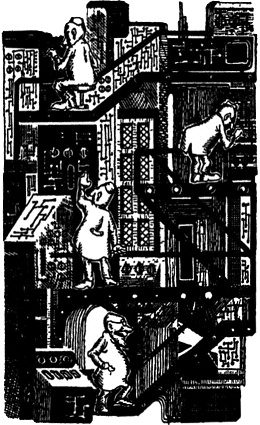107Stories About ChemistryINDEX |
With Its Eyes 76. A Word on the Use of Analysis Mikhailo Lomonosov once said: �Chemistry stretches wide its arms...� Two hundred odd years ago his ingenuity sensed the significance of this science for future generations. The twentieth century has brought this out vividly. Chemistry is now a �many-armed creature.� Not every academician can even enumerate all its branches right on the spot. And new ones keep appearing almost every year. But there is one thing without which any of these chemical �arms� would hang lifeless. That thing is chemical analysis. It has helped chemists to discover very many of the elements existing on Earth. It has enabled them to establish the constituent parts of chemical compounds, both simple and complex, from table salt to proteins. It has deciphered the compositions of rocks and minerals and has helped geochemists to account scrupulously the Earth�s reserves of chemical elements.  Chemistry owes much to analysis, in particular, its becoming an exact science. Analysis is the first helper in various spheres of human activity, as is seen from an untold number of examples. For instance, suppose iron is being smelted from its ore in a blast furnace. Its properties depend largely on the amount of carbon in the resulting metal. If there is more than 1.7 per cent carbon in it, we get cast iron; the interval from 1.7 to 0.2 per cent represents various grades of steel, and if the metal contains less than 0.2 per cent carbon it is called wrought iron. What is the difference between iron and steel, brass and bronze? How much copper is there in blue vitriol? Is there much potassium in the mineral carnallite? Only chemical analysis supplies the answers to these and similar questions. Two main questions confront it: what elements are contained in the substance under investigation, and in what proportion? The former is the scope of qualitative, and the latter, of quantitative analysis. As to how many different kinds of analyses there are, no one, not even an experienced specialist, can say right off the bat. |





